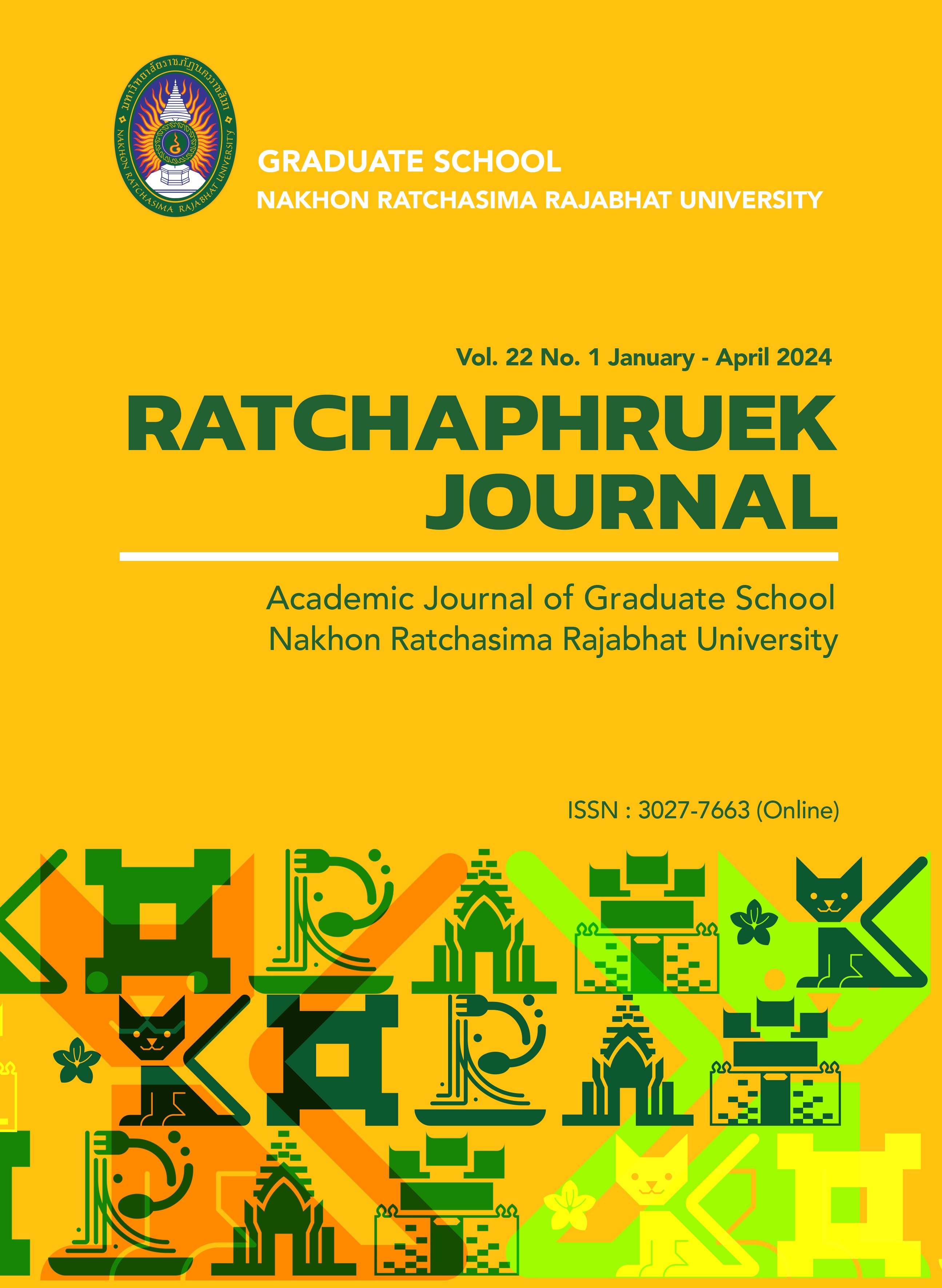Assessing the Needs for Developing Dance Classrooms: A Study Using the Learning Community Model for Elementary School Dance Teachers
Main Article Content
Abstract
This research article aims to investigate the essential prerequisites for establishing a dance classroom dedicated to Thai performing arts, utilizing the learning community model within the context of primary school dance education. The study comprises two components: 1) a qualitative analysis involving in-depth interviews with ten expert teachers and group discussions with an additional ten dance arts instructors, and 2) a quantitative analysis utilizing a questionnaire distributed to 370 primary school dance teachers specializing in Thai performing arts. Qualitative data underwent content analysis, while quantitative data were assessed using statistical measures, including mean, standard deviation, and the modified Priority Needs Index (PNI).
The findings underscore a significant need among dance teachers of Thai performing arts to cultivate classrooms based on the learning community model. Quantitative results indicate that the overall environment and the process of organizing dance in Thai performing arts teaching, with a modified PNI index of 0.37, surpass the critical value of 0.30, signifying an urgent need for development in this domain. Upon closer examination of individual aspects, the modified PNI index ranged between 0.35 and 0.37. The top three priorities identified were the environment and process of organizing dance teaching in Thai performing arts (0.37), the design and creation of educational innovations (0.36), and the management of dance arts classrooms and learning community aspects (0.35), respectively.
Article Details

This work is licensed under a Creative Commons Attribution-NonCommercial-NoDerivatives 4.0 International License.
References
กระทรวงศึกษาธิการ. (2564). คู่มือการดำเนินการตามหลักเกณฑ์และวิธีการประเมินตำแหน่งและวิทยะฐานะข้าราชการครูและบุคลากรทางการศึกษาตำแหน่งครู. สืบค้นเมื่อ 26 พฤศจิกายน 2566, จาก https://shorturl.asia/A8wKJ
กองทุนเพื่อความเสมอภาคทางการศึกษา. (2565). งานเสวนาวิชาการ “ภาวะฉุกเฉินทางการเรียนรู้หลังโควิด-19 แนวทางฟื้นฟูรับเปิดเทอมใหม่”. สืบค้นเมื่อ 24 พฤศจิกายน 2566, จาก https://shorturl. asia/3jpdN
จิราพร รอดพ่วง, มารุต พัฒผล, วิชัย วงษ์ใหญ่ และสุพิน บุญชูวงศ์. (2560). การพัฒนารูปแบบชุมชนแห่งการเรียนรู้เชิงวิชาชีพเพื่อเสริมสร้างทักษะการจัดการเรียนรู้ การคิดอย่างเป็นระบบและการสร้างสรรค์นวัตกรรมของนักศึกษาวิชาชีพครู. Veridian E-Journal, Silapakorn University (Humanities, Social Sciences and arts), 10(1), น. 281-296.
พิมพ์วดี จันทรโกศล, สมหมาย แจ่มกระจ่าง และศรีวรรณ ยอดนิล. (2558). กระบวนการถ่ายทอดนาฏศิลป์ไทยในโรงเรียนมัธยมศึกษาภาคตะวันออก. วารสารการศึกษาและการพัฒนาสังคม, 10(2), น. 50-61.
สุวิมล ว่องวาณิช. (2558). การวิจัยประเมินความต้องการจำเป็น (พิมพ์ครั้งที่ 4). กรุงเทพฯ: วี.พรินท์.
Anderson, L. W., & Krathwohl, D. R. (2001). A taxonomy for learning, teaching, and assessing: A revision of Bloom's taxonomy of educational objectives: complete edition. New York: Addison Wesley Longman.
Bloom, B. S. (1956). Taxonomy of educational objectives, handbook I: The cognitive domain. New York: David McKay.
Charles, C. M., Senter, G. W., & Barr, K. B. (1992). Building classroom discipline. New York: Longman White Plains.
Di Giulio, R. C. (2007). Positive classroom management: A step-by-step guide to helping students succeed. (3rd ed.). Thousand Oaks, CA: Corwin Press.
DuFour, R. (2004). What is a professional learning community. Educational leadership, 61(8), pp. 6-11.
Gabriel, E., & Matthews, L. (2011). Choice Theory: An Effective Approach to Classroom Discipline and Management. The Journal of Adventist Education, 73(03), pp. 19-23.
Kounin, J. S. (1970). Discipline and Group Management in Classrooms. New York: Holt, Rinehart and Winston.
Meyers, C., & Jones, T. B. (1993). Promoting Active Learning: Strategies for the College Classroom. San Francisco, CA: Jossey-Bass.
Rogers, E. M., Singhal, A., & Quinlan, M. M. (2014). Diffusion of innovations. In An integrated approach to communication theory and research (pp. 432-448). New York: Routledge.
Rosenholtz, S. J. (1989). Workplace conditions that affect teacher quality and commitment: Implications for teacher induction programs. The Elementary School Journal, 89(4), pp. 421-439.
Yamane, T. (1973). Statistics: An introductory analysis (3rd ed.). New York: Harper and Row.


